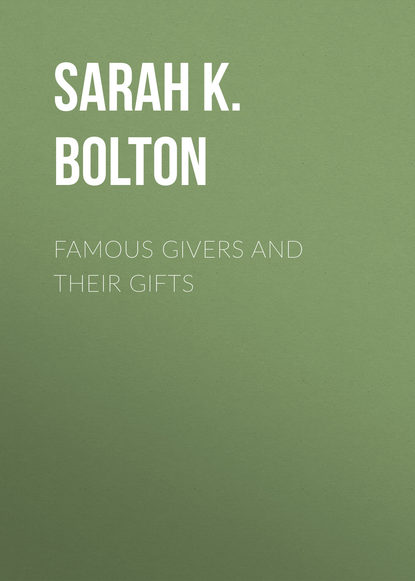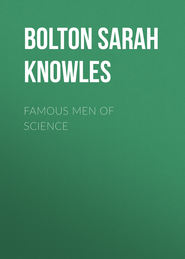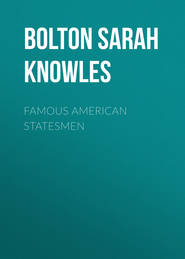По всем вопросам обращайтесь на: info@litportal.ru
(©) 2003-2024.
✖
Famous Givers and Their Gifts
Настройки чтения
Размер шрифта
Высота строк
Поля
After Mr. Lick disposed of his mill, he began to improve a tract of land south of San José known as "The Lick Homestead Addition." "Day after day," says the San José Mercury, "long trains of carts and wagons passed slowly through San José carrying tall trees and full-grown shrubbery from the old to the new location. Winter and summer alike the work went on, the old man superintending it all in his rattletrap wagon and bearskin robe. His plans for this new improvement were made regardless of expense. Tradition tells that he had imported from Australia rare trees, and in order to secure their growth had brought with them whole shiploads of their native earth. He conceived the idea of building conservatories superior to any on the Pacific Coast, and for that purpose had imported from England the materials for two large conservatories after the model of those in the Kew Gardens in London. His death occurred before he could have these constructed; and they remained on the hands of the trustees until a body of San Francisco gentlemen contributed funds for their purchase and donation to the use of the public in Golden Gate Park, where they now stand as the wonder and delight of all who visit that beautiful resort."
Mr. Lick also built in San Francisco a handsome hotel called the Lick House. With his own hands he carved some of the rosewood frames of the mirrors. He caused the walls to be decorated with pictures of California scenery. The dining-room has a polished floor made of many thousand pieces of wood of various kinds.
When Mr. Lick was seventy-seven years old, and found himself the owner of millions, with a laudable desire to be remembered after death, and a patriotism worthy of high commendation, he began to think deeply how best to use his property.
On Feb. 15, 1873, Mr. Lick offered to the California Academy of Sciences a piece of land on Market Street, the site of its present building. Professor George Davidson, then president of the academy, called to thank him, when Mr. Lick unfolded to him his purpose of giving a great telescope for future investigation of the heavenly bodies. He had become deeply interested from reading, it is said, about possible life on other planets. It is supposed by some that while Mr. Lick lived his lonely life in Peru, a priest, who gained his friendship, interested him in astronomy. Others think his mind was drawn towards it by reading about the Washington Observatory, completed in 1874, and noticed widely by the press.
Mr. Lick was not a scientist nor an astronomer; he had been too absorbed in successful business life for that; but he earned money that others might have the time and opportunity to devote their lives to science.
Mr. Lick appears to have had a passion for statuary, as shown by his gifts. At one time he thought of having expensive memorial statues of himself and family erected on the heights overlooking the ocean and the bay, but was dissuaded by one of his pioneer friends, according to Miss M. W. Shinn's account in the Overland Monthly, November, 1892.
"Mr. D. J. Staples felt it his duty to tell Mr. Lick frankly that his bequests for statues of himself and family would be utterly useless as a memorial; that the world would not be interested in them; and when Mr. Lick urged that such costly statues would be preserved for all time, as the statues of antiquity now remained the precious relics of a lost civilization, answered, almost at random, 'More likely we shall get into a war with Russia or somebody, and they will come around here with warships, and smash the statues to pieces in bombarding the city.'"
Mr. Lick conferred with his friends, but had his own decided wishes and plans which usually he carried out. On July 16, 1874, he conveyed all his property, real and personal, over $3,000,000, by deed of trust to seven men; but becoming dissatisfied with some members of the Board of Lick Trustees, he made a new deed, Sept. 21, 1875, under which his property has been used as he directed. A year later he changed some of the members, but the deed itself remained as before.
One of the first bequests under his deed of trust was for the telescope and observatory, $700,000. Another, to the Protestant Orphan Asylum of San Francisco, $25,000.
For an Orphan Asylum in San José, "free to all orphans without regard to creed or religion of parents," $25,000.
To the Ladies' Protective and Belief Society of San Francisco, $25,000.
To the Mechanics' Institute of San Francisco, "to be applied to the purchase of scientific and mechanical works for such Institute," $10,000.
To the Trustees of the Society for Prevention of Cruelty to Animals, of San Francisco, $10,000, with the hope expressed by him, "that the trustees of said society may organize such a system as will result in establishing similar societies in every city and town in California, to the end that the rising generations may not witness or be impressed with such scenes of cruelty and brutality as constantly occur in this State."
To found in San Francisco "an institution to be called The Old Ladies' Home," $100,000. For the erection and the maintenance of that extremely useful public charity, Free Public Baths, $150,000. These baths went into use Nov. 1, 1890.
For the erection of a monument to be placed in Golden Gate Park, "to the memory of Francis Scott Key, the author of 'The Star-Spangled Banner,'" $60,000. This statue was unveiled July 4, 1888.
To endow an institution to be called the California School of Mechanical Arts, "to be open to all youths born in California," $540,000.
For statuary emblematical of three important epochs in the history of California, to be placed in front of the San Francisco City Hall, $100,000.
To John H. Lick, his son, born in Pennsylvania, June 30, 1818, $150,000. The latter contested the will; and a compromise was effected whereby he received $533,000, the expense of the suit being a little over $60,000. This son, at his death, founded Lick College, Fredericksburg, Penn., giving it practically all his fortune. It is now called Schuylkill Seminary, and had 285 pupils in 1893, according to the Report of the Commissioner of Education. A family monument was erected at Fredericksburg, Penn., Mr. Lick's birthplace, at a cost of $20,000.
Mr. Lick set aside some personal property for his own economical use during his life. After all these bequests had been attended to, the remainder of his fortune was to be given in "equal proportions to the California Academy of Sciences and the Society of California Pioneers," to be expended in erecting buildings for them, and in the purchase of a "suitable library, natural specimens, chemical and philosophical apparatus, rare and curious things useful in the advancement of science, and generally in the carrying out of the objects and purposes for which said societies were respectively established." Each society has received about $800,000 from the Lick estate. These were very remarkable gifts from a man who had been a mechanic, brought up in narrow circumstances, and with limited education.
The California School of Mechanical Arts was opened in January, 1895, and now, in the spring of 1896, has 230 pupils. The substantial brick buildings are in Spanish architecture, and cost, with machinery and furniture, about $115,000, leaving $425,000 for endowment. The Academic Building is three stories high, and the shops one and two stories. The requirements for pupils in entering the school are substantially the same as for the last of the grammar grades of the public schools. There is no charge for tuition.
Mr. Lick in making this bequest stated its object: "To educate males and females in the practical arts of life, such as working in wood, iron, and stone, or any of the metals, and in whatever industry intelligent mechanical skill now is or can hereafter be applied."
In view of this desire on the part of the giver, a careful survey of industrial education was made; and it was decided to "give each student a thorough knowledge of the technique of some one industrial pursuit, from which he may earn a living."
The school course is four years. At the beginning of the third year the student must choose his field of work for the last year and a half, and give his time to it. Besides the ordinary branches, carpentry, forging, moulding, machine and architectural drawing, wood-carving, dressmaking, millinery, cookery, etc., are taught. It is expected that graduates will be able to earn good wages at once after leaving the school, and the teachers endeavor to find suitable situations for their pupils.
Miss Caroline Willard Baldwin, at the head of the science department, who is herself a Bachelor of Science from the University of California, and a Doctor of Science from Cornell University, writes me: "The grade of work is much the same as that given in the Pratt Institute in Brooklyn, and the entire equipment of the school is excellent."
The Lick Bronze Statuary at the City Hall in San Francisco was unveiled on Thanksgiving Day, Thursday, Nov. 29, 1894. Mr. Lick had specified in his deed of trust that it should "represent by appropriate designs and figures the history of California; first, from the early settlement of the Missions to the acquisition of California by the United States; second, from such acquisition by the United States to the time when agriculture became the leading interest of the State; third, from the last-named period to the first day of January, 1874." He knew that there is no more effective way to teach history and inculcate love of city and nation than by object-lessons. A great gift is a continual suggestion to others to give also. The statue of a noble man or woman is a constant educator and inspirer to good deeds.
The Lick Statuary is of granite, surmounted by bronze figures of heroic proportions. The main column is forty-six feet high, with a bronze figure twelve feet high, weighing 7,000 pounds, on the top, representing Eureka, a woman typical of California, with a grizzly bear by her side. Beneath are four panels, depicting a family of immigrants crossing the Sierras, a vaquero lassoing a steer, traders with the Indians, and California under American rule.
Below these panels are the heads in bronze of James Lick, Father Junipero Serra, Sir Francis Drake, and John C. Frémont; and below these, the names of men famous in the history of California, – James W. Marshall, the discoverer of gold at Sutter's mill, and others. There are granite wings to the main pedestal, the bronze figures of which represent early times, – a native Indian over whom bends a Catholic priest, and a Spaniard throwing his lasso; a group of miners in '49, and figures denoting commerce and agriculture. The artist was Mr. Frank Happersberger, a native of California. Members of the California Pioneers made eloquent addresses at the unveiling of the beautiful statue, the band played "The Star-Spangled Banner," and the children of the public schools sang "America."
"The benefactions of James Lick were not of a posthumous character," said the Hon. Willard B. Farwell in his address. "There was no indication of a desire to accumulate for the sake of accumulation alone, and to cling with greedy purpose and tenacity to the last dollar gained, until the heart had ceased its pulsations, and the last breath had been drawn, before yielding it up for the good of others. On the contrary, he provided for the distribution of his wealth while living… There was no room for cavil then over the manner of his giving. He fulfilled in its broadest measure the injunction of the aphorism, 'He gives well who gives quickly.'"
The gift nearest to Mr. Lick's heart was his great telescope, to be, as he said in his deed of trust, "superior to and more powerful than any telescope yet made, with all the machinery appertaining thereto, and appropriately connected therewith."
This telescope with its building was to be conveyed to the University of California, and to be known as the "Lick Astronomical Department of the University of California."
Various sites were suggested for the great telescope. A gentleman relates the following story: "One of the sites suggested was a mountain north of San Francisco. Mr. Lick was ill, but determined upon visiting this mountain; so he was taken on a cot to the station; and on arriving at the town nearest the mountain, the cot was removed to a wagon, and they started towards the summit. By some accident the rear of the wagon gave way, and the cot containing the old gentleman slid out on the mountain-side. This so angered him that he said he would never place the telescope on a mountain that treated him in that way, and ordered the party to turn back towards San Francisco."
During the summer of 1875 Mr. Lick sent Mr. Fraser, his trusted agent, to report on Mount St. Helena, Monte Diablo, Mount Hamilton, and others. In many respects the latter, in sight of his old mill at San José, seemed the best situated of all the mountain peaks. "Yet the possibility that a complete astronomical establishment might one day be planted on its summit seemed more like a fairy-tale than like sober fact," says Professor Edward S. Holden, Director of the Lick Observatory. "It was at that time a wilderness. A few cattle-ranches occupied the valleys around it. Its slopes were covered with chaparral or thickets of scrub oak. Not even a trail led over it. The nearest house was eleven miles away." It was and is the home of many rattlesnakes. They live upon squirrels, and small birds and their eggs, and come up to the top of the mountain in quest of water.
Sir Edwin Arnold, who visited Mount Hamilton, tells this incident of the "road-runner," the bird sometimes called "chaparral cock," as it was told to him. "The rattlesnake is the deadly enemy of its species, always hunting about in the thickets for eggs and young birds, since the 'road-runner' builds its nest on the ground. When, therefore, the 'chaparral cocks' find a 'rattler' basking in the sun, they gather, I was assured, leaves of the prickly cactus, and lay them in a circle all around the serpent, which cannot draw its belly over the sharp needles of these leaves. Thus imprisoned, the reptile is set upon by the birds, and pecked or spurred to death."
Mount Hamilton, fifty miles southeast of San Francisco, is near San José, twenty-six miles eastward, and thus easy of access, save the difficulty of reaching its summit, 4,300 feet above the sea. This was overcome by the willingness of Santa Clara County to construct a road to its top; which road was completed in December, 1876, at a cost of about $78,000. The road rises 4,000 feet in twenty-two miles; and the grade nowhere exceeds six and one-half feet in one hundred, or 343 feet to the mile. Towards the top it winds round and round the flanks of the mountain itself.
The view from the top of the mountain is most inspiring. "The lovely valley of Santa Clara and the Santa Cruz mountains to the west, a bit of the Pacific and the Bay of Monterey to the southwest, the Sierra Nevada (13,000-14,000 feet) with countless ranges between to the southeast, the San Joaquin valley with the Sierras beyond to the east, while to the north lie many lower ranges of hills, and on the horizon Mount Shasta, or Lassens' Butte (14,400 feet), 175 miles away. The Bay of San Francisco lies flat before you, and beyond it is Mount Tamalpais at the entrance to the Golden Gate."
"One of the gorges in the vicinity of Mount Hamilton," writes Taliesin Evans in the May, 1886, Century, "is reputed to have been a favorite retreat of Joaquin Murietta, the famous bandit, whose name was a terror to the early settlers of the State. A spring, situated a mile and a half east of Observatory Peak, at which he is said to have drawn water, now bears the name of 'Joaquin's Spring.'"
On June 7, 1876, Congress gave the land for the site, 1,350 acres; and other land was given and purchased, till the Observatory now has 2,581 acres. It was necessary to remove 72,000 tons of solid rock from the mountain summit, which was lowered as much as thirty-two feet in places, that the buildings might have a level foundation. Clay for making the brick was found about two and one-half miles below the Observatory (by the road), thus saving over $46,000 in the 2,600,000 bricks used. Springs also were fortunately discovered about 340 feet below the present level of the summit.
In 1879, after the site had been decided upon, Professor S. W. Burnham of Chicago was asked by the Lick trustees to test it for astronomical purposes. He took his telescope, and remained there during August, September, and October. Out of sixty nights he found forty-two were of the very highest class for making observations, while eleven were foggy or cloudy. He discovered forty-two new double stars while on the top of the mountain.
Professor Burnham said in his Report, "The remarkable steadiness of the air, and the continued succession of nights of almost perfect definition, are conditions not to be hoped for in any place with which I am acquainted, and judging from the previous reports of the various observatories, are not to be met with elsewhere."
Meantime, even before Congress gave the land in 1876, Mr. D. O. Mills, one of the first trustees, had visited Professor Holden and Professor Newcomb at Washington to determine about the general plans for the Observatory. It was agreed that the latter should go to Europe to investigate the matter of procuring the glass necessary for a large reflector or refractor. It was finally decided that a refracting telescope was the best for the study of double stars and nebulæ, the moon's surface, etc., giving more distinctness and brilliancy, and being less subject to atmospheric disturbance.
Professor Newcomb experienced much difficulty in Europe in finding a firm ready to undertake to make a glass for a telescope larger and more powerful than any yet made. The firm of M. Feil & Sons, Paris, was finally chosen. Professor Newcomb wrote an interesting report of the process of making the glass.
"The materials," he said, "are mixed and melted in a clay pot holding from five hundred pounds to a ton, and are constantly stirred with an iron rod until the proper combination is obtained. The heat is then slowly diminished until the glass becomes too stiff to be stirred longer. Then the mass, pot and all, is placed in the annealing furnace. Here it must remain undisturbed for a period of a month or more, when it is taken out; the pot and the outside parts of the glass are broken away to find whether a lump suitable for the required disk can be found in the interior.
"If the interior were perfectly solid and homogeneous, there would be no further difficulty; the lump would be softened by heat, pressed into a flat disk, and reannealed, when the work would be complete. But in practice, the interior is always found to be crossed in every direction by veins of unequal density, which will injure the performance of the glass; and the great mechanical difficulty in the production of the disk is to cut these veins out and still leave a mass which can be pressed into a disk without any folding of the original surface."
The glass for a telescope is usually composed of a double convex lens of crown glass, and a plano-concave lens of flint glass. M. Feil & Sons made and shipped the latter, which weighed three hundred and seventy-five pounds, but broke the crown glass in packing it. Then during three years they made twenty unsuccessful trials before obtaining a perfect glass.
The cutting away of the clay pot and outside glass is a tedious process, requiring weeks and even months. No ordinary tools can be used. The pieces are "sawed by a wire working in sand and water… When it is done," says Professor Newcomb, "the mass must be pressed into the shape of a disk, like a very thin grindstone, and in order to do this the lump must first be heated to the melting-point, so as to become plastic. But when Feil began to heat this large mass it flew to pieces." He took more and more time for heating, and finally succeeded.
The noted firm of Alvan Clark & Sons of Cambridge, Mass., did the polishing and shaping of the lenses, a labor requiring great skill and delicacy of workmanship. The objective glass was ordered in 1880, and reached Mount Hamilton late in 1886, having cost $51,000. It weighs with its cell 638 pounds. The Clarks would not undertake any larger objective than thirty-six inches. This was six inches larger than the great glass which they had made for the Imperial Observatory at Pulkowa, near St. Petersburg in Russia.
The glass, though an important part of the telescope, was only one of many things to be obtained. In 1876 Captain Richard S. Floyd, president of the Lick trustees, himself a graduate of the United States Naval Academy, met Professor Holden in London; and the latter became the planner and adviser, throughout the construction of the buildings and the telescope. Captain Floyd visited many observatories, and carried on a vast correspondence, amounting to several thousand letters, with astronomers and opticians all over the world.
Professor Holden was a graduate of West Point, had been a professor of mathematics in the navy, one of the astronomers at the Washington Observatory, in charge of several eclipse expeditions sent out by the government for observation, a member of various scientific societies in Europe as well as America, and associate member of the Royal Astronomical Society of England, and well-fitted for the position he was afterwards called to fill, – the directorship of the Lick Observatory. For some time he was also president of the University of California.
Between the years 1880 and 1888 the large astronomical buildings were erected on the top of Mount Hamilton. The main building of red brick consists of two domes, one twenty-five feet and six inches in diameter; the other seventy-six feet in diameter, connected by a hall over one hundred and ninety-one feet long. This hall is paved and wainscoted with marble. The rooms for work and study open towards the east into this hall. The library, a handsome room with white polished ash cases and tables, also opens into it. Near the main entrance is the visitors' room, where the visitors register their names, among them many noted scientists from various parts of the world. J. H. Fickel in the Chautauquan, June, 1893, says, "In this room stands the workbench which Mr. Lick used in his trade, that of piano-making, while in Peru. Though not an elaborate affair, nothing attracts the attention of visitors more than this article of furniture."
The large rotating dome at the south end of the building, made by the Union Iron Works of San Francisco, is covered with sheet steel, and the movable parts weigh about eighty-nine tons. It is easily handled by means of a small engine in the basement. The small dome weighs about eight tons.










